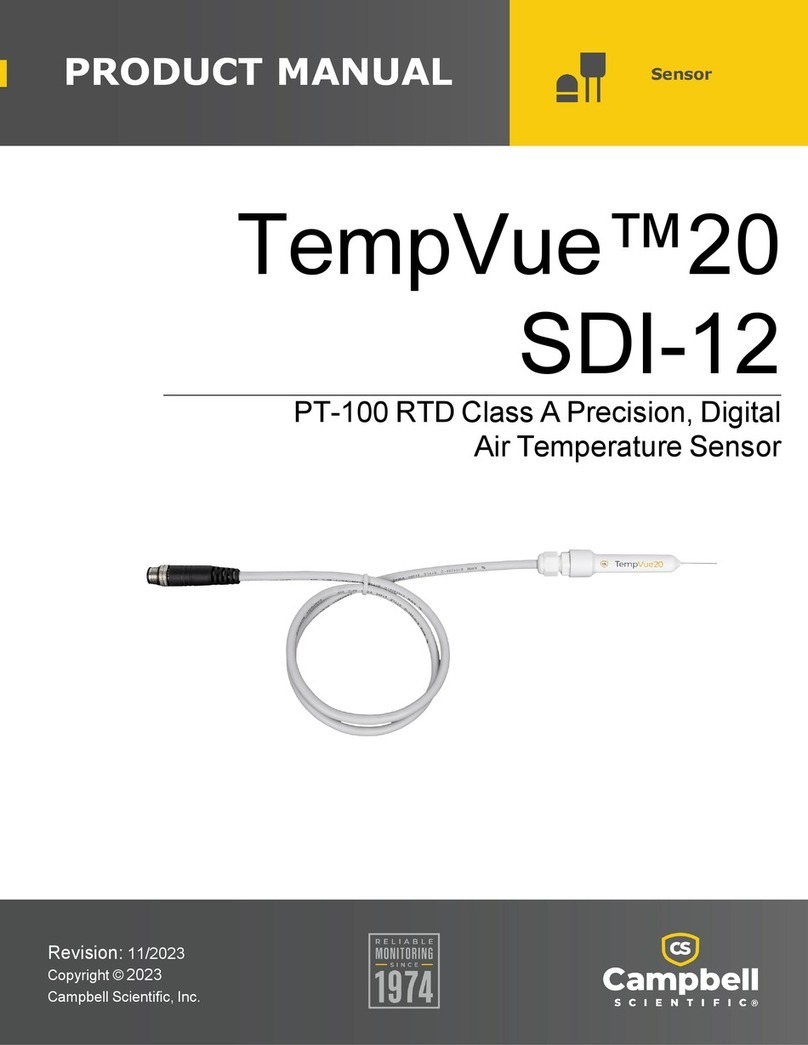
1. About SurfaceVue 10
The SurfaceVue™10 is a non-invasive road condition sensor used by road weather professionals
to provide vital information about their road network to make better maintenance and
operational decisions. The SurfaceVue 10 sensor consists of two non-invasive road weather
sensors designed for use with your Road Weather Information System (RWIS). The CS981 is
enclosed in a white radiation shield and mounted on top of the CS991, which is in a black tube.
The CS981 measures surface temperature, air temperature, relative humidity, and air pressure.
The measured air temperature and relative humidity are used to calculate dew point. Ground
temperature and wind speed are modeled. The CS991 uses spectroscopic analysis to provide you
with surface state, grip (friction), and water and ice layer thickness data. The measured data is
communicated to a data logger over RS-232 or optionally over RS-485 using an RS485EXT
converter box.
NOTE:
Ground temperature is the temperature below the road surface at 6 cm (2.4 in) depth.
Road surface condition is determined by the presence and amount of ice or water on the road
surface. From these measurements, the built-in model determines the coefficient of friction,
which corresponds to the grip between the road surface and vehicle tires. The model is
developed by using braking deceleration measurements as a reference. Comparison tests
indicate about 0.10 units as standard deviation of the difference to the reference. Very thin layers
and mixed ice/water layers may occasionally lead to larger differences. All the data is updated
approximately every 10 seconds.
The analyzed road surface state is reported as:
1. Dry
2. Moist
3. Wet
4. Slush, ice or snow with water
5. Ice
6. Snow or hoar frost.
After power-up or reset, the SurfaceVue 10 sends a wake-up string containing the sensor name
and version information. Approximately 10 seconds after the initial message, it automatically
sends a data message when a measurement/calculation cycle is complete; typically, once every
10 seconds. A data logger with the SurfaceVue 10 program, see CRBasic programming(p. 12), is
SurfaceVue 101




























